Las Vegas serves as a prime gateway for road trips to national parks and public lands across the United States. Its strategic location makes it perfect for exploring Nevada and venturing into Arizona, California, and Utah. Among the most breathtaking and accessible routes is the journey from Las Vegas to Zion National Park. This drive showcases stunning desert scenery and offers a variety of fascinating stops along the way. Whether you’re a first-time road tripper, traveling with family, or embarking on a solo adventure, this route is an excellent choice. Let’s explore with National Park Shops!
Distance from Las Vegas to Zion National Park
The fastest way to reach Zion National Park from Las Vegas via Interstate 15 covers about 160 miles and takes roughly two and a half hours without any stops. Alternatively, the Lake Mead route spans around 180 miles and requires approximately 3 hours and 15 minutes of drive time, assuming you don’t make any stops but trust me, you’ll want to pause along the way, so be sure to allow for extra time.
Both routes are manageable in a single day, but two days would make for a more relaxed journey. If you have three days, you’ll have ample time to explore additional sites in southern Nevada and Utah. To better visualize the route and key attractions, refer to the map below.
This Las Vegas to Zion National Park itinerary offers a diverse range of stops and activities, but I’ve highlighted some of my top recommendations. As you’ll see, this road trip is highly flexible and can be tailored to suit your interests and travel style.
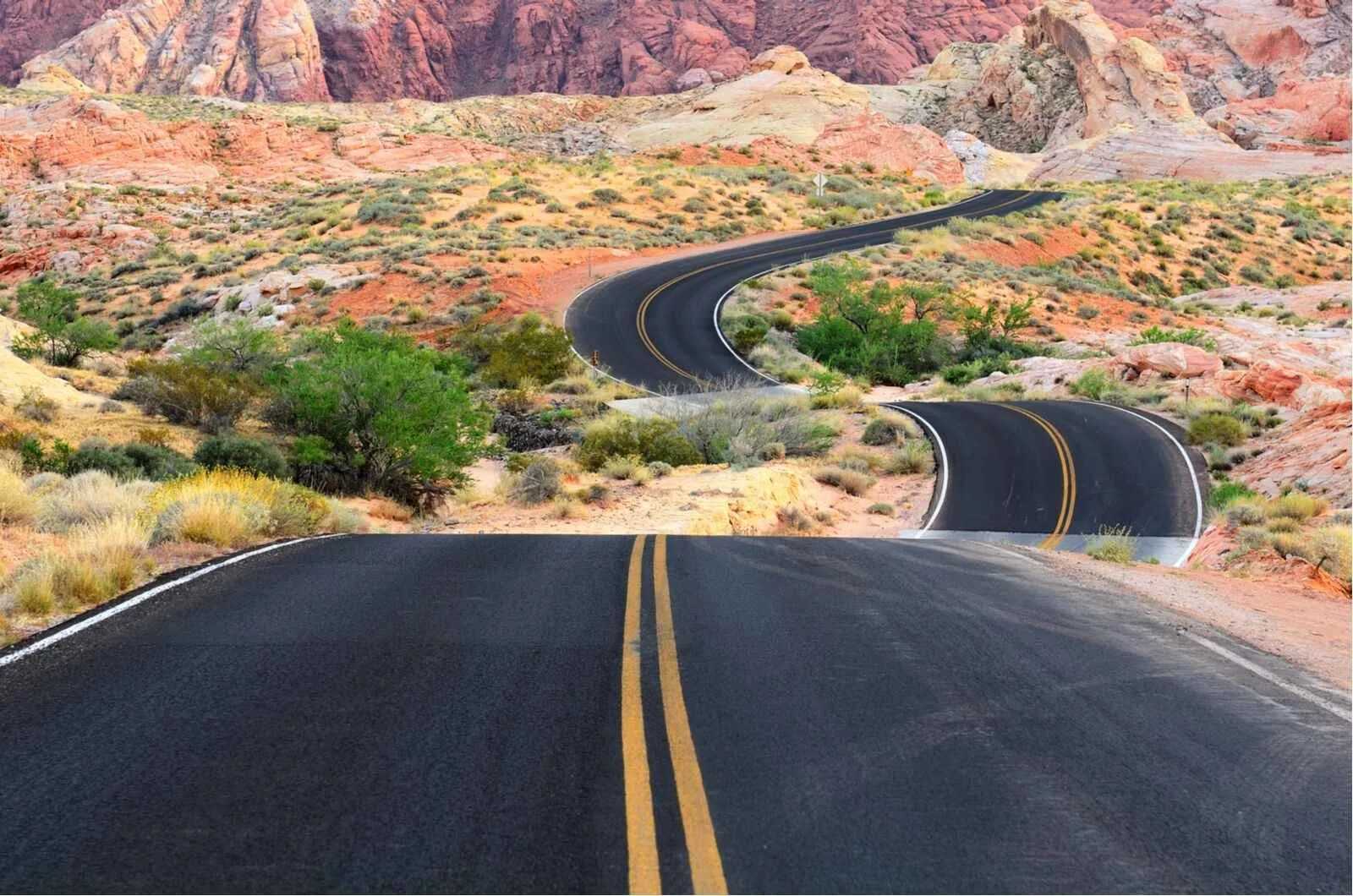
How can I get to Yellowstone National Park from Las Vegas?
There are several ways to travel from Las Vegas to Yellowstone National Park, depending on your preferred method of transportation and the amount of time you have available. Here’s an overview of your options:
By Car (Driving)
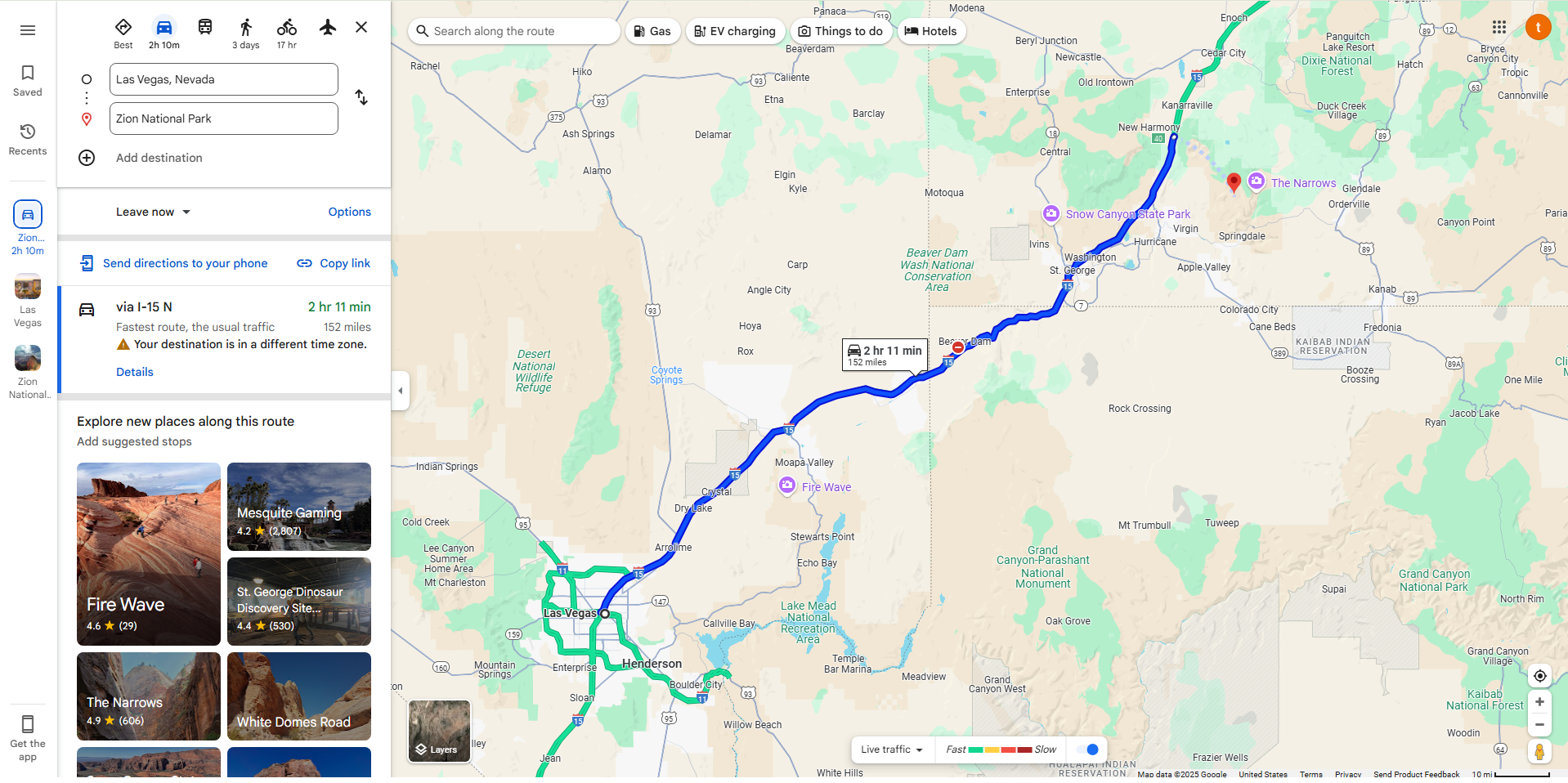
Distance: Approximately 750-850 miles, depending on your route and which entrance to Yellowstone you’re aiming for (e.g., West Entrance via Idaho or South Entrance via Grand Teton).
Driving Time: About 12-14 hours without stops, but realistically, you’d want to break it up over 1-2 days.
Route Options:
- Via I-15 North (Fastest):
- Take I-15 North from Las Vegas through Utah and into Idaho.
- At Idaho Falls, head east on US-20 toward West Yellowstone, MT (West Entrance).
- Total time: ~12.5 hours, 760 miles.
- Via Grand Teton (Scenic):
- Take I-15 North to US-93, then connect to US-26 East through Jackson, WY.
- Continue north through Grand Teton National Park to Yellowstone’s South Entrance.
- Total time: ~14 hours, 850 miles, but stunning views make it worthwhile.
Tips: Gas up in bigger towns (St. George, UT, or Idaho Falls, ID), as options get sparse closer to the park. Roads can be icy or closed in Yellowstone winter (especially late fall to early spring), so check conditions if traveling around now (March 26, 2025).
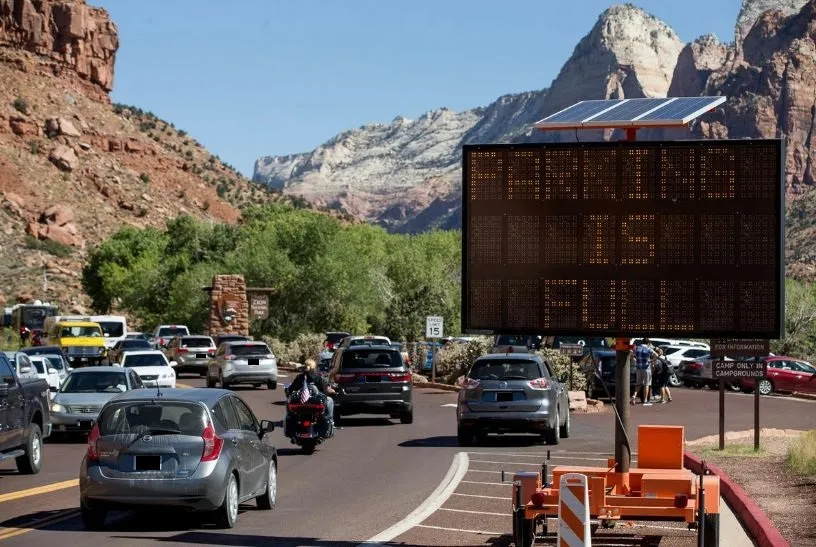
By Plane
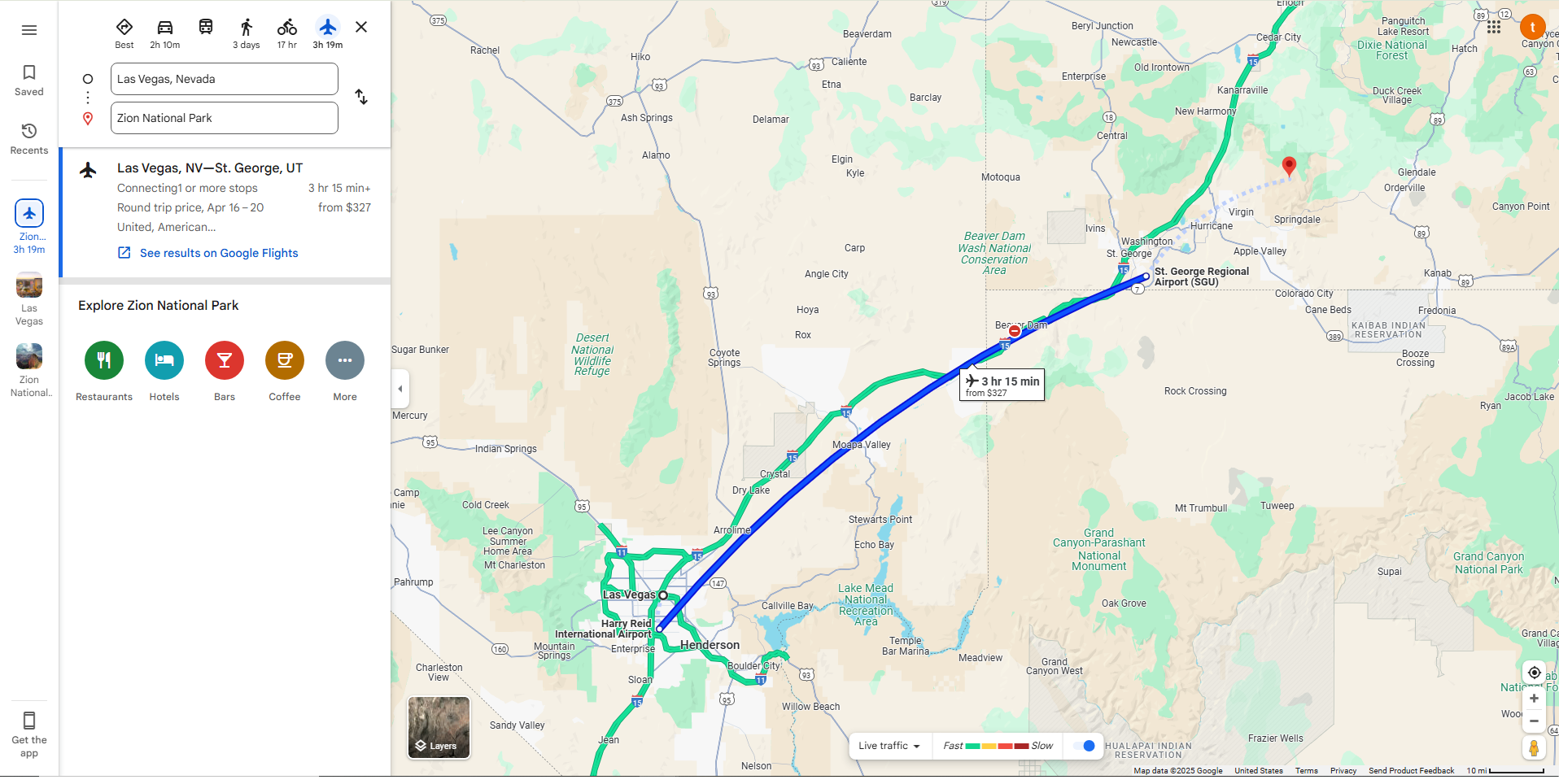
Nearest Airports:
- Harry Reid International Airport (LAS)
- Jackson Hole Airport (JAC): Closest to the South Entrance (~60 miles), but flights from Vegas are often connecting and pricey.
- Bozeman Yellowstone International Airport (BZN): Near the North Entrance (~90 miles), with more flight options.
- West Yellowstone Airport (WYS): Tiny, seasonal (summer only), and very close to the West Entrance.
Flight Details:
- From Harry Reid International Airport (LAS), you’d likely connect through Salt Lake City or Denver. Delta, United, or Southwest offer routes.
- Flight time: ~3-4 hours including layovers, plus 1-2 hours driving from the airport.
Cost: Round-trip tickets might range from $200-$400, depending on booking time.
Car Rental: You’ll need one from the airport to reach the park, as public transport is limited.
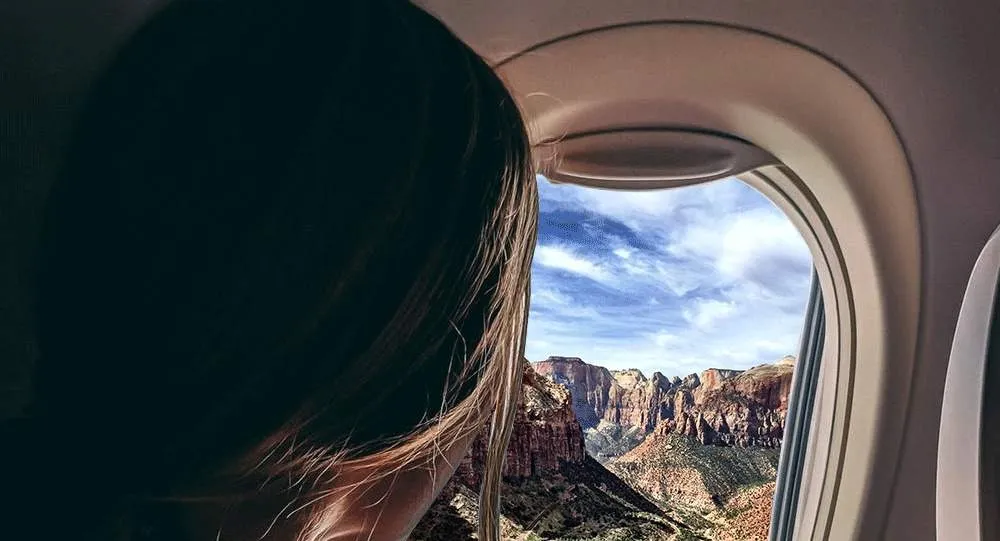
By Bus/Shuttle
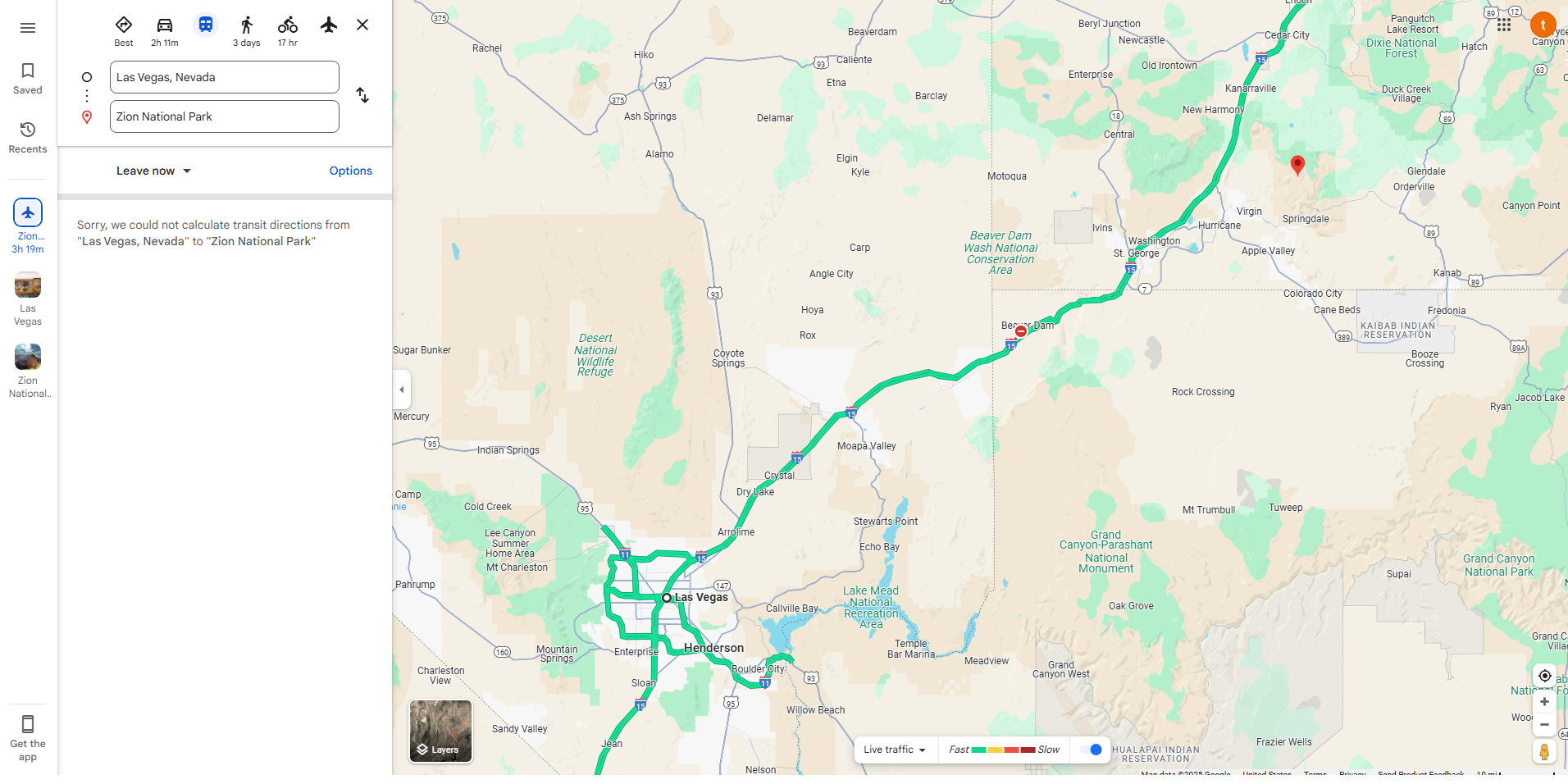
No Direct Bus Route
There isn’t a single bus that travels directly from Las Vegas to Yellowstone. However, one option is taking a Greyhound or FlixBus to Salt Lake City, which takes approximately six hours. From there, you can transfer to a shuttle service like Salt Lake Express to reach West Yellowstone or Jackson. Keep in mind that this journey is lengthy, exceeding 20 hours in total, and bus schedules can be inconsistent.
Who This Option Suits Best
This route is most suitable for budget-conscious travelers who are willing to endure a long and unpredictable trip.
>> Read More: 10 National Park Week 2025 Top Parks: You Must Try
Las Vegas to Zion National Park Road Trip Stops
Las Vegas
If you’re flying into Las Vegas and planning to spend a few days in the city before hitting the road, take advantage of the many free attractions and local experiences. From exploring The Strip to taking short day trips, there’s plenty to see and do.
For those looking to venture just outside the city, Red Rock Canyon Conservation Area, the Hoover Dam, and Boulder City are excellent nearby destinations. If you prefer something closer, consider visiting Tule Springs National Monument or Springs Preserve for a mix of nature and history.
If Las Vegas is simply your starting point and you’d rather skip the hustle of The Strip, you’re in luck. Harry Reid International Airport (LAS) is conveniently located south of downtown, making it easy to step off your flight and head straight to the interstate without navigating city traffic. For travelers wanting to rest before an early departure, consider staying near the airport.
>> Read More: The 6 Closest Airport To Zion National Park: Local Tips
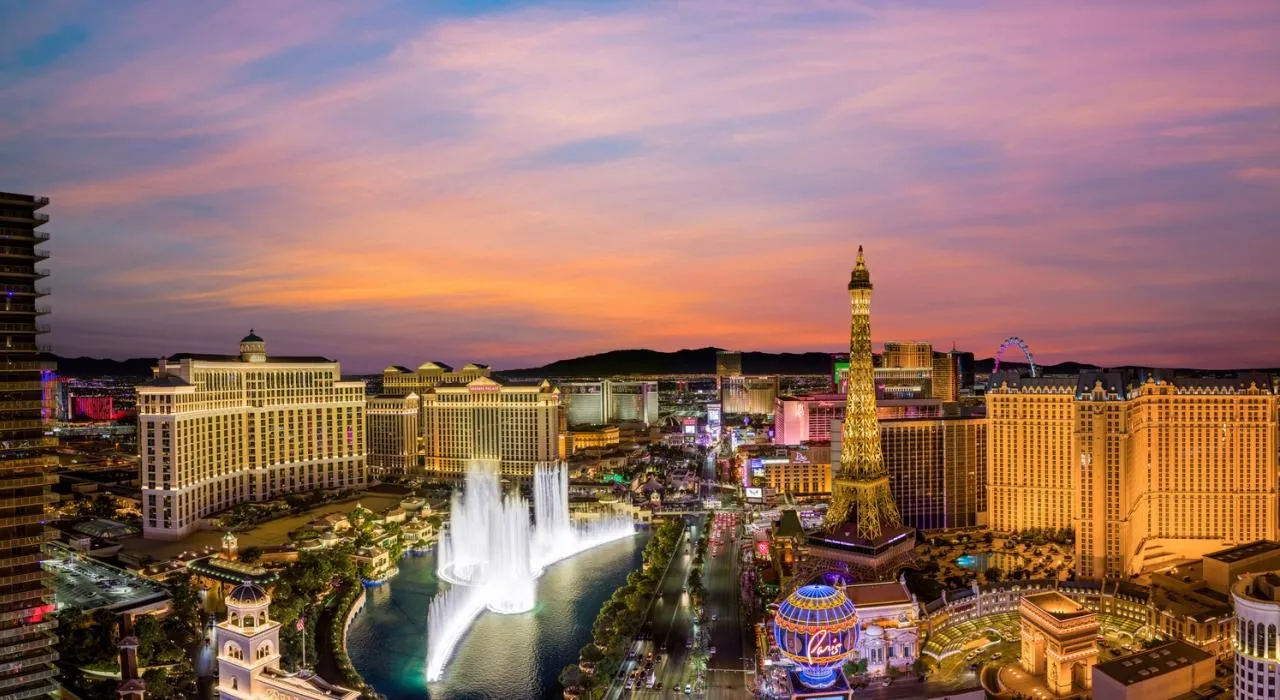
Las Vegas to Overton
If you’re using Google Maps for directions from Las Vegas to Zion National Park, the fastest route will likely take you on Interstate 15. This is the quickest option if your goal is to reach Zion as soon as possible. However, if you’d rather take your time and enjoy the journey, consider a more scenic route that includes Lake Mead National Recreation Area, which offers beautiful landscapes and the opportunity to spot wildlife along the way from Las Vegas to Zion National Park.
Depending on where you’re staying in Las Vegas, you can easily access Lake Mead by heading towards Henderson and Lake Las Vegas, then continuing a few miles beyond Lake Las Vegas to the park entrance. The park charges a $25 fee, or you can use an America the Beautiful Park Pass. If you don’t have one, it’s a good opportunity to buy one, especially since Zion National Park also has an entrance fee.
Once inside Lake Mead, take a left onto Northshore Road, a 62-mile scenic drive with breathtaking views of mountains, unique landscapes, and Lake Mead itself. This road connects the modern recreation area to the historic Moapa Valley, making it one of the most scenic drives in Nevada. Along the way, you’ll pass Redstone, Echo Bay, and Rogers Springs, a hot springs oasis with palm trees. Keep an eye out for wildlife such as wild horses, burros, and bighorn sheep as you make your way from Las Vegas to Zion National Park.
When you exit Lake Mead, Northshore Road leads directly into Valley of Fire State Park. If you start early in the morning, you can explore both Lake Mead and Valley of Fire before heading to Zion. Even a quick stop at the visitor center in Valley of Fire will give you insight into the park’s formation, and if time permits, you can also view the 4,000-year-old petroglyphs at Atlatl Rock. The entrance fee to Valley of Fire is $10 for Nevada residents and $15 for non-residents.
From Valley of Fire, continue on to Overton and visit the Lost City Museum, which is housed in a historic building constructed in 1935 by the Civilian Conservation Corps. The museum showcases an archaeological site and reconstructed pueblos, offering a fascinating glimpse into the region’s history.
If you prefer not to drive through Lake Mead National Recreation Area, you can still visit Valley of Fire and the Lost City Museum by taking exit 75 on I-15. Enter Valley of Fire from the west entrance, drive along the Valley of Fire Highway, and then exit through the east entrance. Head left on Highway 169 toward Overton, visit the museum, and then return to I-15 via Highway 169.
>> Read More: Guide to Zion National Park Weather by Month
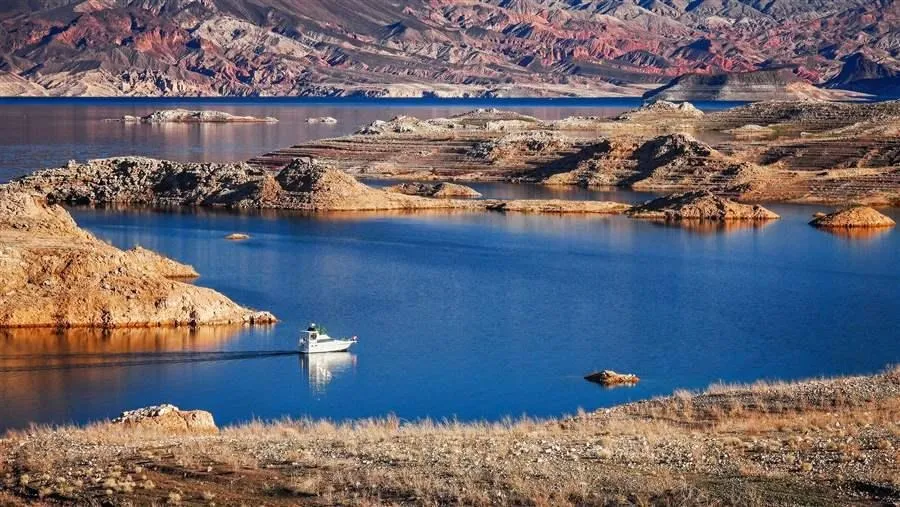
Overton, Nevada to Mesquite
As you drive from Overton on your way from Las Vegas to Zion National Park, you’ll pass through Nevada’s historic Moapa Valley. Once you reach the interstate, it’s just a short 30-mile drive to Mesquite, a small town that’s perfect for an overnight stop between Las Vegas to Zion National Park. Both the Eureka Casino Resort and Rising Star Sports Ranch Resort offer convenient accommodations to break up your journey.
Spending the night in Mesquite also gives you the chance to explore local culture and history. Visit the Mesquite Fine Arts Center, the Virgin Valley Heritage Museum to learn about the early pioneers, and the Donkey History Museum, which is managed by a local donkey rescue organization. These attractions provide a unique opportunity to discover more about the area’s past as you make your way from Las Vegas to Zion National Park.
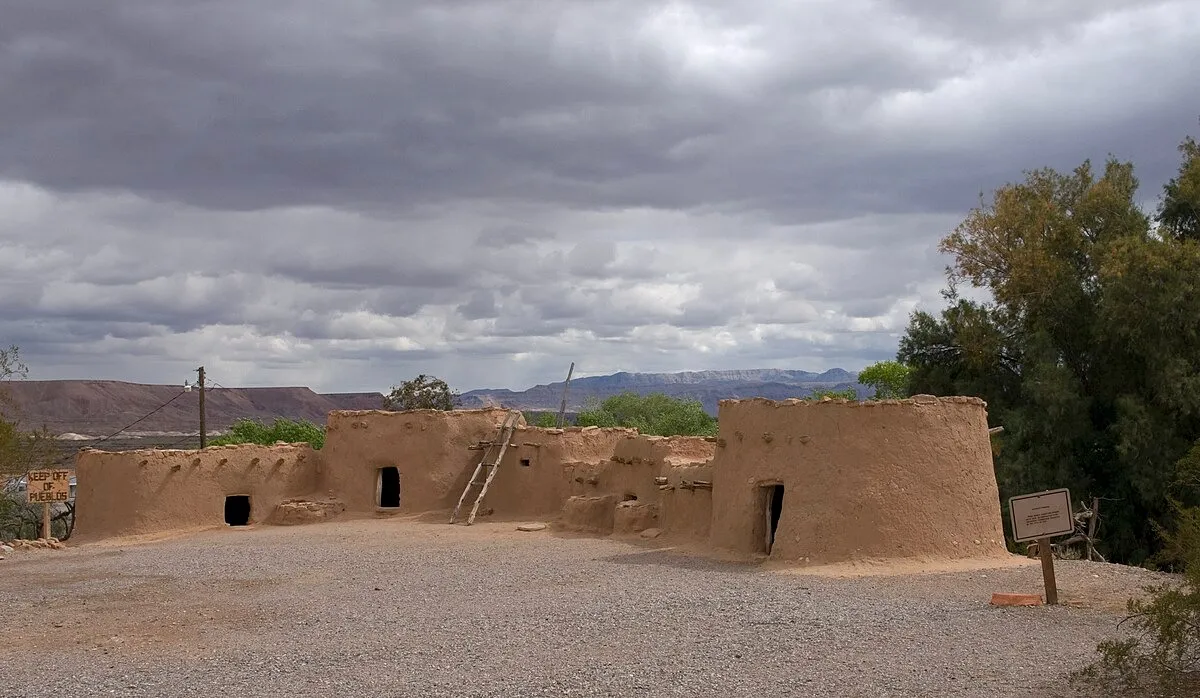
Mesquite, Nevada to the Virgin River Gorge
Before reaching Utah on your journey from Las Vegas to Zion National Park, you’ll pass through the Arizona Strip, the upper northwest corner of Arizona. This area, once inhabited by the Kaibab Indians and other Native American tribes, was later settled by Mormon pioneers in the 19th century. It remains a unique and sparsely populated region, primarily because it is separated from the rest of Arizona by the Grand Canyon.
The Arizona Strip is a place of cultural importance, rich history, and natural beauty. One of its notable features is the Virgin River, which also flows through Zion National Park. Along with the Muddy River, the Virgin River plays a key role in the region, eventually draining into the Colorado River just north of Lake Mead.
While traveling from Las Vegas to Zion National Park, the interstate crosses the Virgin River and winds through the ancient Virgin River Gorge, creating one of the most thrilling and scenic drives in the United States. This stretch of road is not only exciting but also one of the most expensive to maintain, with one of the last bridge repairs in the mid-2000s costing more than the entire project back in the 1970s.
Though the road itself offers few opportunities to stop, the BLM (Bureau of Land Management) manages the Virgin River Canyon Campground at exit 18, a great spot to take a break, stretch your legs, and enjoy a short walk before continuing your journey from Las Vegas to Zion National Park.
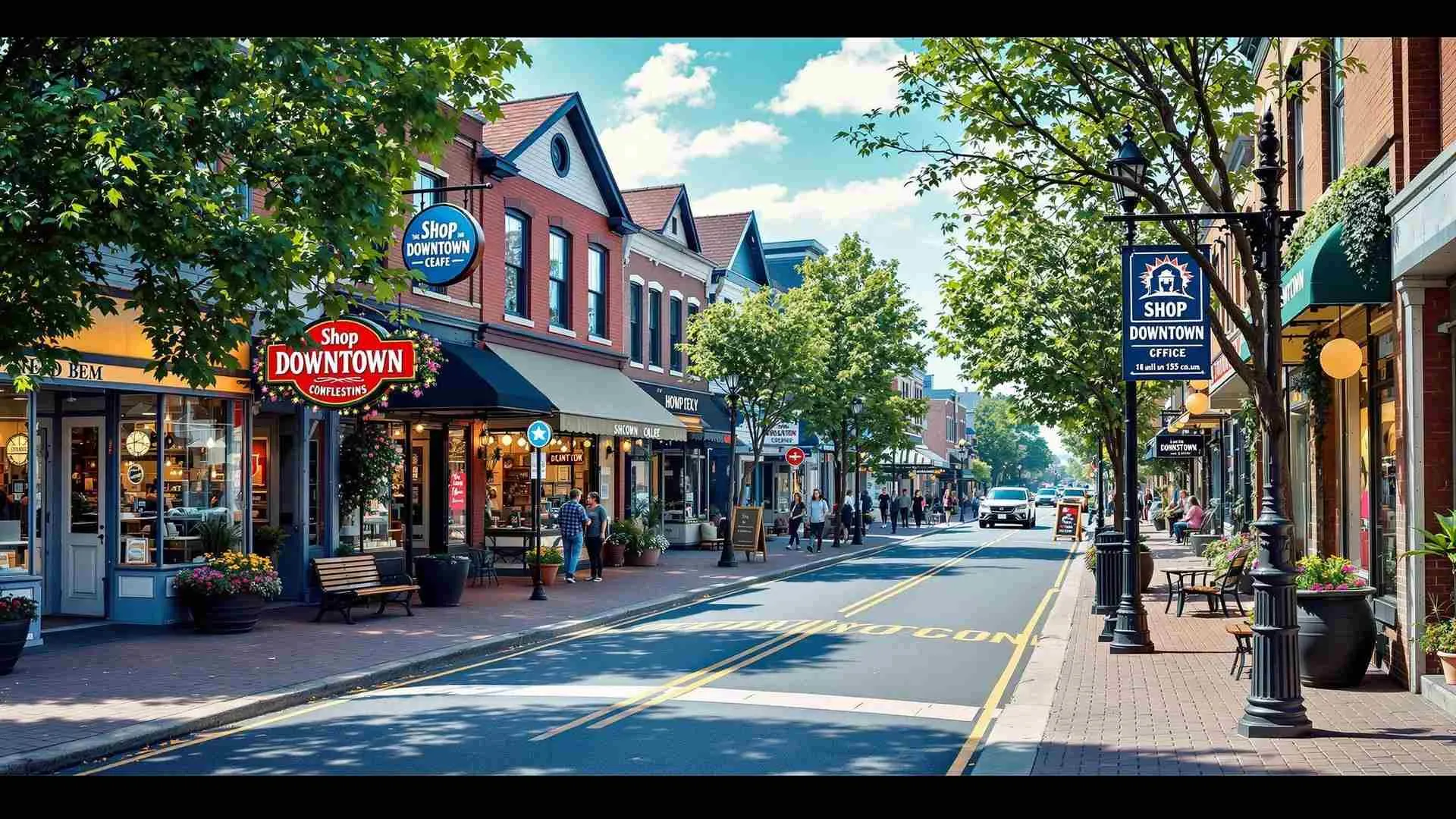
Virgin River Gorge to St. George
Beyond the “Welcome to Utah” sign, the drive into Utah doesn’t offer much until you reach St. George, the first larger city you’ll encounter. St. George is a great addition to any Las Vegas to Zion National Park road trip, offering plenty of activities. You can visit attractions like the White Domes Nature Preserve, Tonaquint Nature Center, and the St. George Dinosaur Discovery Site, among others.
This part of Utah is also home to several state parks that are worth exploring. Sand Hollow State Park, Quail Creek State Park, and Snow Canyon State Park are all close to St. George and could easily be included in your Las Vegas to Zion National Park itinerary. I personally spent a day at Snow Canyon and thoroughly enjoyed it.
Another must-see area is the Red Cliffs National Conservation Area, located just north of St. George along I-15. This spot is known for its stunning hiking trails and features a charming, small first-come, first-served campground. For those who prefer guaranteed camping, there’s also a nearby KOA, making it another great option to consider on your journey from Las Vegas to Zion National Park.
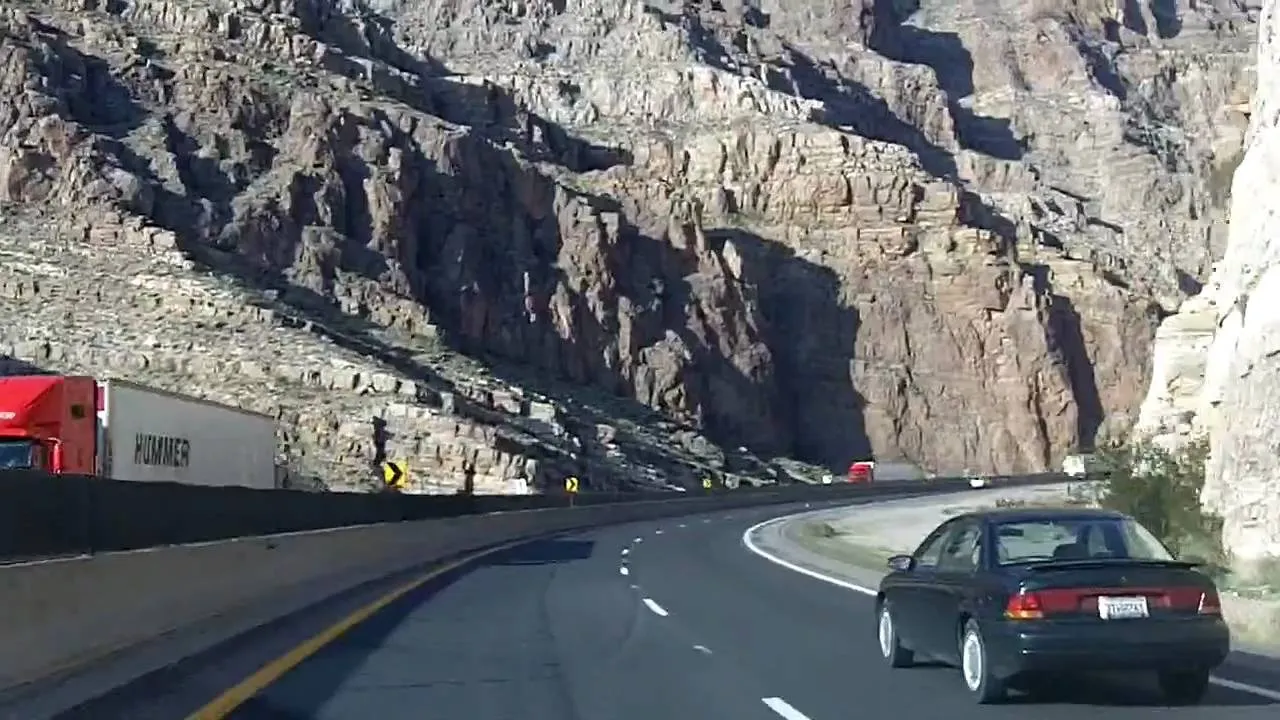
St. George, Utah to Hurricane
Just a few miles north of St. George, you’ll leave the interstate behind and take Highway 9. While Exit 16 is the main route to Zion National Park, I prefer Exit 13. I started using this exit a few years ago because it tends to have less traffic compared to Exit 16, and it’s convenient for a quick stop. There’s a Maverik Convenience Store here, a Wyoming-based chain that has expanded across the western states, and I’ve become a big fan. They offer clean restrooms, hot food, and deli sandwiches, with murals of the western landscape at each location. While St. George has grown rapidly, I still stop here regularly when heading from Las Vegas to Zion National Park, unless I need a full grocery run.
Once you get onto Highway 9, it’s just 19 miles to Hurricane. If you need supplies, the Walmart Super Center is your last chance for a large grocery stop. I usually avoid it due to the crowds, but it’s a good option if you need food or specific items. This area also offers a few chain hotels, such as Comfort Inn & Suites and Sleep Inn & Suites, which are well-rated. I haven’t stayed at either, but they are newer and would be good options for those who want to explore the area before continuing on their Las Vegas to Zion National Park journey.
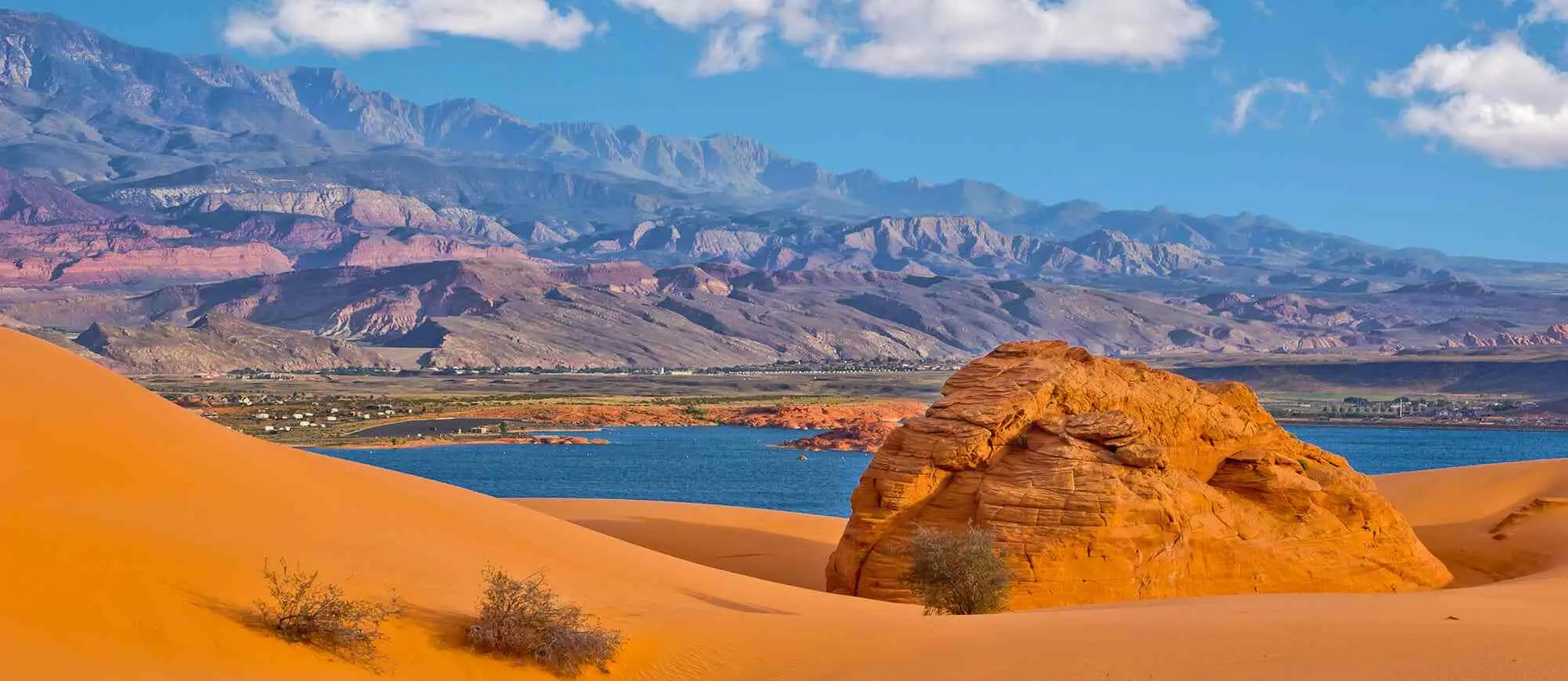
Hurricane, Utah to Zion National Park
You’re nearly at Zion now, with just a few small towns left before you reach the park. In La Verkin, you’ll find one of my favorite spots for coffee and meals in the U.S. – River Rock Roasting Company. They serve an amazing breakfast and tasty burgers, plus their back patio offers a fantastic view. While they also have a drive-thru in Hurricane, it doesn’t quite capture the same atmosphere.
La Verkin is also the last place where you can find a decent grocery store. Davis Food & Drugs is the main option, and there’s also a Family Dollar offering some basic food items. While Springdale, near Zion, has a few small markets and delis, none are as large as these stores.
Just north of La Verkin on Highway 9, you’ll pass several campgrounds and accommodation options. Zion River Resort is a large RV and tent campground with excellent facilities, while Zion Wildflower Resort offers unique small cottages and covered wagons for a stay. There’s also the popular Under Canvas Zion nearby. If you’re making the Las Vegas to Zion National Park drive, these spots offer great places to rest before entering the park.
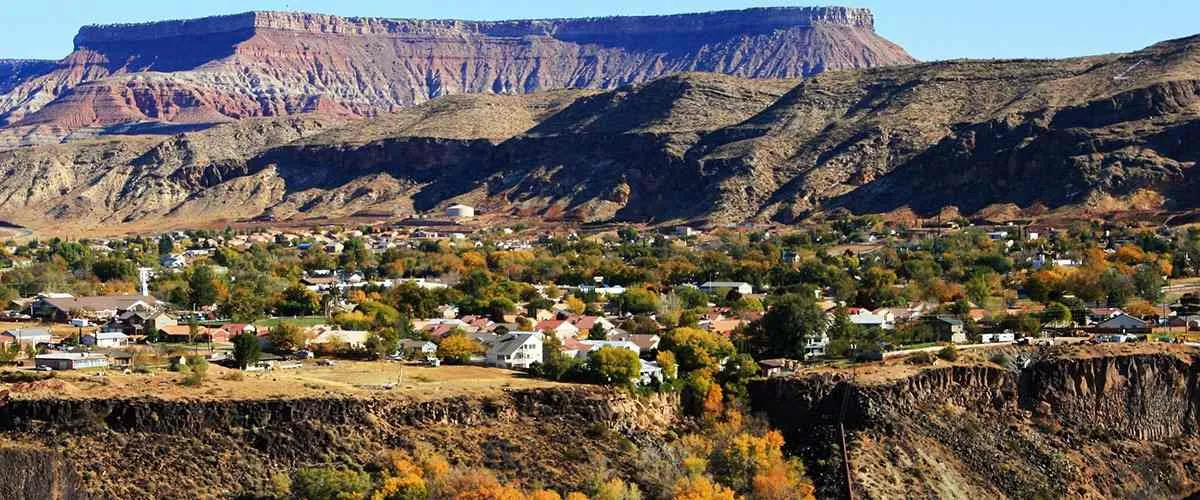
Best Time to road trip from Las Vegas to Zion National Park?
Zion National Park is open year-round, allowing visitors to experience its beauty no matter the month, weather permitting. Thanks to the mild temperatures in Las Vegas to Zion National Park and well-maintained roads, the park is accessible even in winter. However, since Zion sits at a higher elevation than Las Vegas, it’s common to encounter snow and icy conditions as you approach the park.
During the Zion summer, it’s essential to monitor the weather closely, particularly during the monsoon season. The canyons are vulnerable to flooding and landslides, and the park service may close trails when conditions are unsafe due to rockslides or heavy rainfall. Be sure to check the forecast and the park’s website before your visit to stay informed and ensure a safe trip.
>> Read More: Zion National Park Lodges Overview: In-Depth Review
How many days do you need in Zion National Park?
Zion National Park can be explored in a day, but if you’re looking to enjoy multiple hikes, horseback riding, or participate in ranger-led activities like stargazing, it’s best to allocate two days for your visit. This gives you more time to experience the many exciting things to do in Zion.
On our road trip from Las Vegas to Zion National Park, my family and I arrived in Las Vegas, spent the night, and then set off the next morning. We took our kids to visit the family-friendly attractions in Las Vegas, and it was the perfect way to spend a day before continuing our journey to Zion.
>> Read More: How Many Days To Spend In Zion National Park: Full Itinerary
Suggested Itinerary from Las Vegas to Zion National Park
Here’s a suggested itinerary for a road trip from Las Vegas to Zion National Park:
Day 1: Depart Las Vegas in the morning and drive towards Zion. Stop at Valley of Fire State Park for stunning red rock views, then continue to St. George for a break and dinner. Arrive at Zion by evening and enjoy stargazing.
Day 2: Start with a sunrise hike at Canyon Overlook, then hike The Narrows. Spend the afternoon exploring Zion’s history or relaxing.
Day 3: Optional short hike or scenic drive before heading back to Las Vegas.
Conclusion
The journey from Las Vegas to Zion National Park is an unforgettable adventure, offering scenic beauty, diverse landscapes, and a taste of the natural wonders that Utah has to offer. Whether you’re traveling by car, shuttle, or even embarking on a road trip with friends or family, this route provides easy access to one of the most iconic national parks in the U.S. From the bustling energy of Las Vegas to the serene, awe-inspiring views of Zion, the trip offers the perfect mix of excitement and tranquility. So, pack your bags, plan your route, and get ready to explore Zion’s majestic cliffs, lush canyons, and unforgettable hikes!
>> Related articles:

